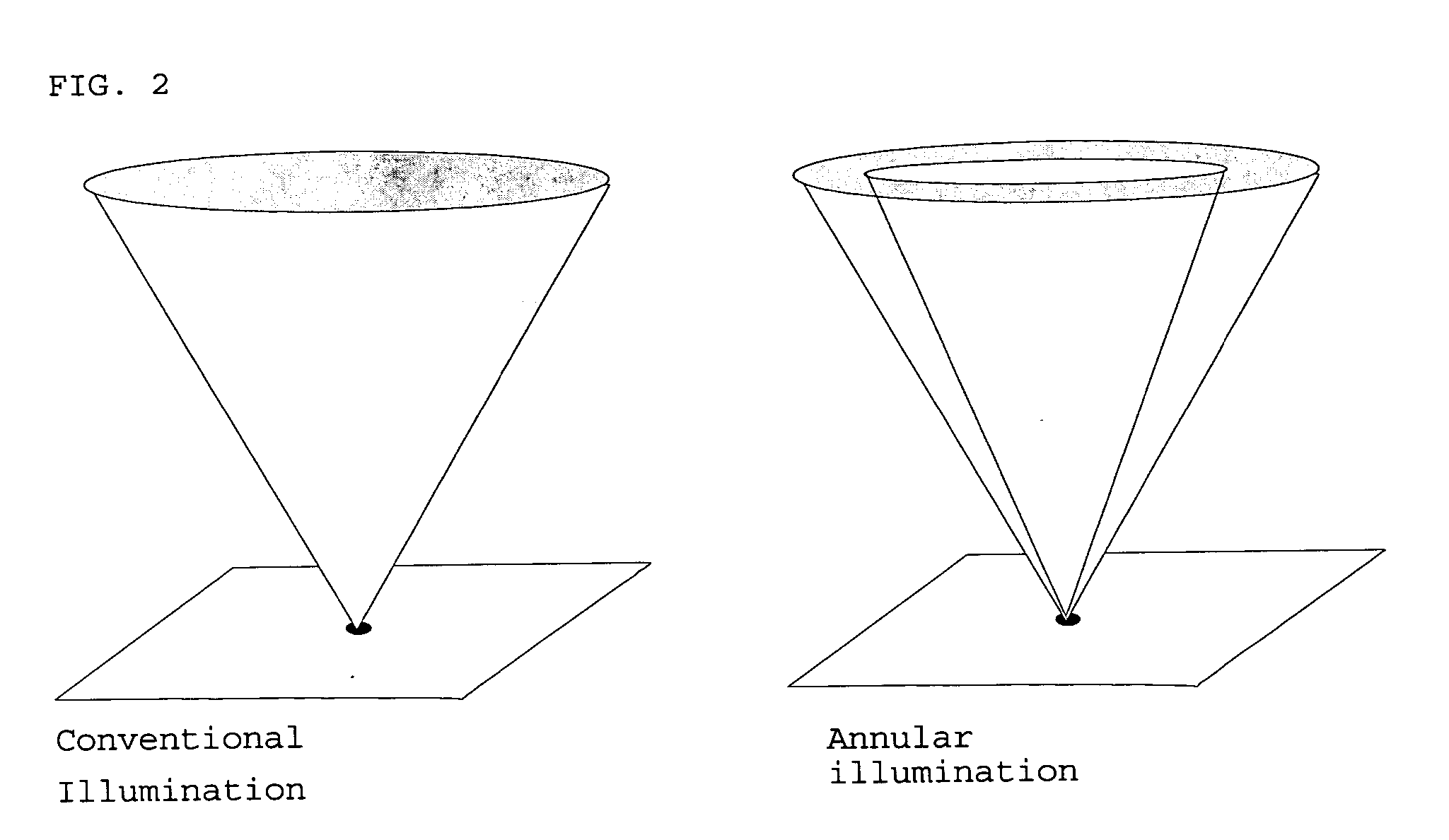Method for characterization of the illuminator in a lithographic system
a technology of lithographic system and illumination, applied in the field of characterizing lithographic projection equipment, can solve the problems of non-uniformity and non-ideal illumination pattern, non-ideal behavior in the imaging performance of an exposure system, and possible variations of other non-uniformities
- Summary
- Abstract
- Description
- Claims
- Application Information
AI Technical Summary
Benefits of technology
Problems solved by technology
Method used
Image
Examples
Embodiment Construction
Characterization of the Illuminator Using a Double Exposure Technique
[0029] Referring to FIG. 6A, a test structure that may be used to characterize the intensity distribution of an illuminator by a double exposure method embodying the present invention comprises mask 10 that defines a large transparent window 11 and a smaller transparent opening 12 in an opaque field. Mask 10 is typically made by depositing a thin film of chromium on a fused silica plate and then etching the chromium to define window 11 and opening 12.
[0030] In a preferred implementation of the invention, the opening 12 is round and is more than one micrometer in diameter. The lower limit on the size of the opening is chosen such as to minimize diffraction effects. Smaller openings (in particular when comparable to the wavelength of the light used to image the opening) are less desirable as they are subject to diffraction effects and these complicate the analysis.
[0031] Referring to FIG. 5, two types of exposure...
PUM
 Login to View More
Login to View More Abstract
Description
Claims
Application Information
 Login to View More
Login to View More - R&D
- Intellectual Property
- Life Sciences
- Materials
- Tech Scout
- Unparalleled Data Quality
- Higher Quality Content
- 60% Fewer Hallucinations
Browse by: Latest US Patents, China's latest patents, Technical Efficacy Thesaurus, Application Domain, Technology Topic, Popular Technical Reports.
© 2025 PatSnap. All rights reserved.Legal|Privacy policy|Modern Slavery Act Transparency Statement|Sitemap|About US| Contact US: help@patsnap.com



